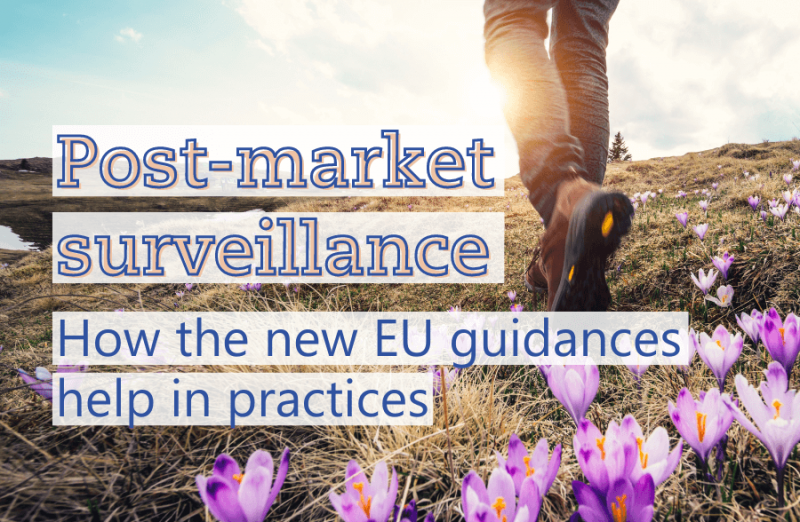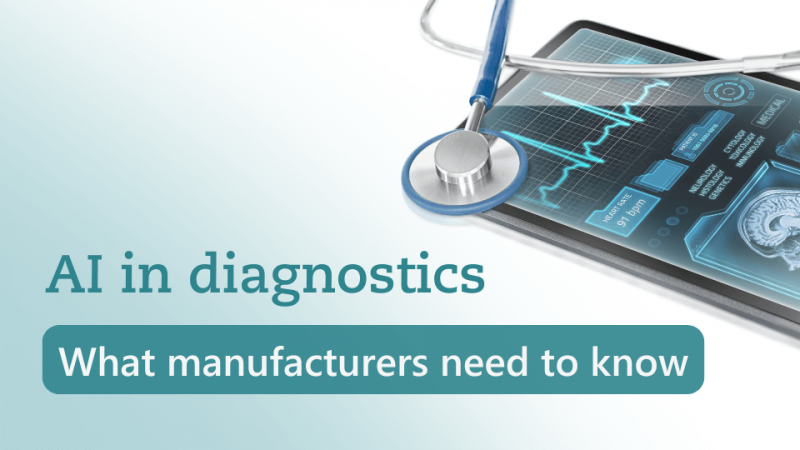Post-market surveillance: How the New EU-MDCG Guidances Help in a Practical Way
04/04/2023
Do you have any questions about the article or would you like to find out more about our services? We look forward to hearing from you!Make a non-binding enquiry now
Until the end of 2022, things were still pretty quiet regarding MDCG guidance documents on post-market surveillance (PMS). However, in recent months, the MDCG has actively published guidances to assist medical device manufacturers with their PMS. This kicked off in December 2022 with the guidance on the Periodic Safety Update Report (PSUR; MDCG 2022-21) and was followed in February 2023 by the MDCG 2023-3 guidance explaining vigilance terms. In this article, we look at both guidance documents, discuss the meaningful use of IMDRF codes, and draw attention to common challenges in PMS.On December 16, 2022, the MDCG 2022-21 guidance on PSURs was issued. We have already summarized its key points in the article "MDCG Guidance 2022-21: These are the highlights". Less than two months later, MDCG 2023-3 on "Questions and answers related to vigilance terms and concepts under Regulation (EU) 2017/745 (MDR)" was published on February 14, 2023. What do the two new MDCG guidance documents mean for PMS implementation in practice?
Best Regards
 Björn-Carsten Schüre
Björn-Carsten Schüre
The 2022-21 MDCG Guidance and the integration of IMDRF codes
Let's start with MDCG Guidance 2022-21. Its publication finally provides manufacturers of class IIa, IIb and III medical devices with long-awaited support in preparing PSURs. The guidance provides them with recommendations including examples on how to present the data.An interesting aspect of MDCG 2022-21 is the presentation of Corrective Actions, Preventive Actions (CAPA) within the Periodic Safety Update Report (PSUR). Table 8 of Annex II shows one possible way of presenting relevant CAPA data. Here it is important to note that the underlying cause of the CAPA can be presented using free text, internal company codes with explanations, or IMDRF Adverse Event Terminology codes. The CAPA-related use of IMDRF Adverse Event Terminology codes could be of particular advantage for the competent authorities because the codes enable, when necessary, an easier comparison of data from different manufacturers of similar medical devices. Keep in mind that when reporting serious incidents, the use of IMDRF codes is already mandatory, which this MDCG guidance also emphasizes.Additionally, this MDCG guidance recommends that the complaints documented in the PSUR should be grouped according to IMDRF Adverse Event Terminology Annex A "Medical Device Problem" codes or internal event codes including term. The advantage of the IMDRF Adverse Event Terminology codes is the uniform assignment and naming of this data set, which allows for easier data analysis. Problems can occur when complaints are first given a free text description (without a code). These complaints are later analyzed, for example, to calculate an occurrence rate for a specific medical device problem. However, if the IMDRF Adverse Event Terminology codes from Annex A are already assigned, the data analysis is straightforward to perform and it is easier to identify trends.By the way: MDCG guidance 2018-2 indicates that EUDAMED will also work with an internationally recognized nomenclature. It seems reasonable to assume that this refers to the IMDRF Adverse Event Terminology codes, which would then also likely be used for trend reporting.The MDCG Guidance 2023-3 and serious incidents
Guidance MDCG 2023-3, published in February 2023, serves as a tool for a better understanding of the terms and concepts from Section 2 of Chapter VII of Regulation (EU) 2017/745 (MDR).Therefore, a significant portion of MDCG 2023-3 consists of explanations to distinguish between an "incident" as defined by Article 2 (64) of the MDR and a "serious incident" according to Article 2 (65) of the MDR. For ease of classification, the guidance provides a decision tree that you can use to determine the incident classification and its corresponding obligations.Please note that a "serious incident" may also exist if the criteria under Article 2 (65) of the MDR could have occurred.MDCG 2023-3 is also interesting from the perspective of IVD manufacturers. This is seen, for example, in Question 3: "How can incidents indirectly lead to a serious deterioration of health?" Because IVDs are used supportively to diagnose diseases by analyzing human samples, they rarely have direct contact with the patient. As a result, indirect harm can increase due to misdiagnosis or failure to treat based on an analysis. Although this example was for IVDs, indirect harm can also be caused by medical devices that are not IVDs. If this indirect harm thereby meets the criteria for a "serious incident" according to Article 87(1) to (5) of the MDR, it must also be treated as such.It should also be mentioned at this point that MDCG guidance 2023-3 - like MDCG guidance 2022-21 - excludes in vitro diagnostics. Nevertheless, manufacturers of IVDs can already use the guidance as an orientation as to where future development might lead.Please note that all requirements from Chapter VII of the MDR/IVDR (Regulation (EU) 2017/746) already apply to legacy products as of May 26, 2021 (medical devices) and May 26, 2022 (IVDs), respectively.PMS – Good intentions, but not full implementation
In the context of post-market surveillance, the question often arises as to which data must be collected to meet the requirements of the MDR/IVDR. A risk-based approach should be used and Annex III 1a) of the MDR/IVDR describes information of particular importance. However other datasets can also be included. This means that there are no limits to creativity regarding meaningful data sources as long as they are in line with your PMS objectives and are evaluated accordingly. Especially the latter does not always seem to be trivial. We often observe that manufacturers have good ideas regarding useful PMS datasets, but do not always adapt or create the corresponding processes necessary to realize the full potential of the idea. Unfortunately, these good ideas then sometimes fail when it comes to the implementation: either no data is collected or there is a flood of non-relevant data that must be filtered for relevance at great expense. Both failures cost time and are not very effective. Therefore, it is best to take time at the early stages to consider how best to build your PMS system to meet your post-market surveillance (PMS) goals under the MDR/IVDR.Conclusion
In recent months, the MDCG has been very active regarding post-market surveillance and has provided a long-awaited guidance for the creation of PSURs (MDCG 2022-21). A new aspect of this guidance is the recommendation to use codes in the documentation of complaints and CAPAs. We recommend the use of IMDRF Adverse Event Terminology codes to save time and increase long term effectiveness. To be sure, the guideline only applies to medical device manufacturers and excludes IVD manufacturers. Nevertheless, it still provides IVD manufacturers with some initial assistance. This is also true for MDCG 2023-3, which helps in understanding the vigilance terms better. Do you have any questions about the two MDCG guidance documents? Or would you like support in setting up a goal-orientated and effective post-market surveillance system including the implementation of IMDRF Adverse Event Terminology codes? Perhaps you are currently dealing with a complex topic in the field of PMS or clinical affairs and are therefore looking for experienced experts? Feel free to contact us at any time. Together we will find the best solution for your specific needs.Best Regards
Our blog posts are researched and created with the utmost care, but are only snapshots of the regulations, which are constantly changing. We do not guarantee that older content is still current or meaningful. If you are not sure whether the article you have read on this page still corresponds to the current state of regulation, please contact us: we will quickly place your topic in the current context.

Regulatory Affairs & Technical Documentation


